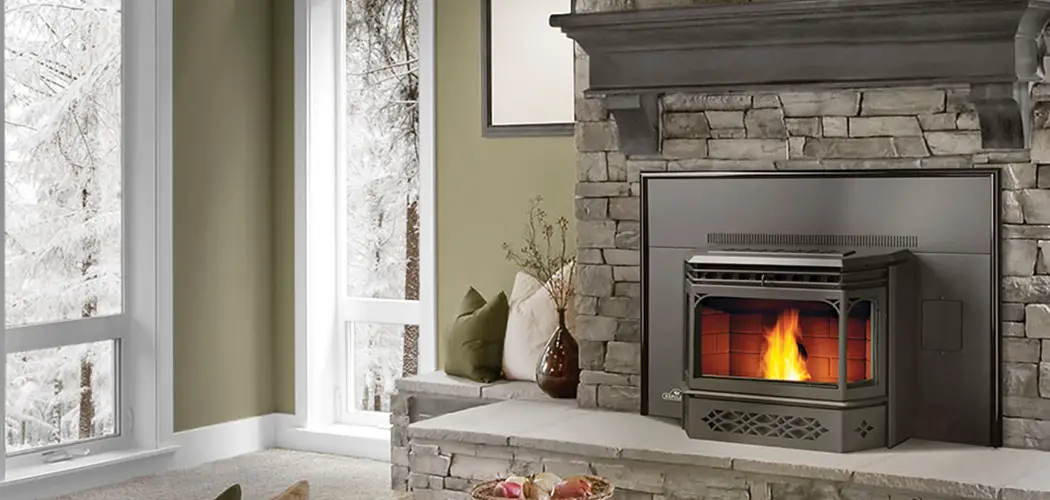Heating an entire house using just a fireplace can be challenging, as most fireplaces are designed to comfortably warm only a single room. When relying solely on a fireplace during colder months, many homeowners face the difficulty of uneven heating, with warm air concentrated in one area while other parts of the home remain chilly. Understanding how to move fireplace heat around house can lead to increased comfort, making every room warm and inviting.
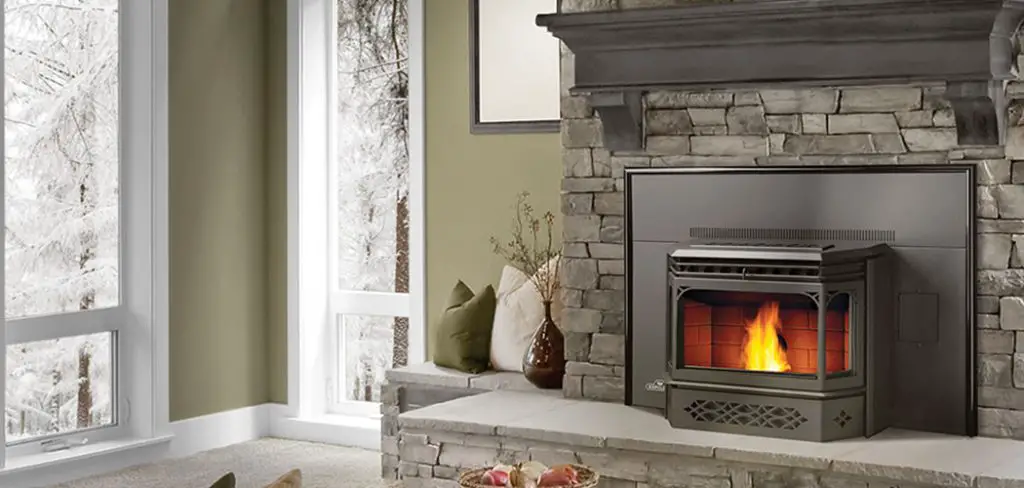
Additionally, effectively distributing the heat can significantly reduce overall heating costs, maximizing the efficiency of your existing fireplace. This article delves into various innovative methods and strategies designed to circulate the warmth generated by your fireplace throughout your home. By exploring and implementing these techniques, you can transform your fireplace from a localized heat source into a comprehensive solution for home heating.
Assess Your Home’s Layout and Fireplace Type
1. Evaluate Your Home’s Layout
The layout of your home plays a critical role in how effectively you can distribute heat from your fireplace. An open floor plan, for instance, allows warm air to flow more freely between spaces, while a closed floor plan may restrict it. Consider room sizes and hallway placement, as these can either facilitate or hinder heat movement.
Identifying key areas where heat can be redirected, such as stairways or long hallways, will help optimize heat circulation. You can guide the warmth more evenly throughout your home by strategically placing fans or opening doors in these areas.

2. Consider the Fireplace Type
The type of fireplace you have — whether wood-burning, gas, or electric — greatly influences heat distribution capabilities. Wood-burning fireplaces typically generate significant heat but may require additional strategies for even distribution. Conversely, gas fireplaces often come with built-in fans to aid in dispersing warmth. Electric fireplaces can vary in heat output. To maximize efficiency, ensure that fans or blowers are used appropriately for gas and electric models, and for wood-burning fireplaces, consider the placement of fans or the use of seasoned wood for better heat output.
3. Check for Proper Ventilation
Proper ventilation is essential to ensuring effective heat movement around your home. Good airflow assists in spreading warm air more evenly from the fireplace. Check existing vents and openings to see if they can be utilized or adjusted to aid in heat flow. Make sure air vents are unobstructed and clean, and consider leveraging them strategically to enhance warm air movement. Additionally, verify that any built-in fans near the fireplace function correctly to optimize heat distribution.
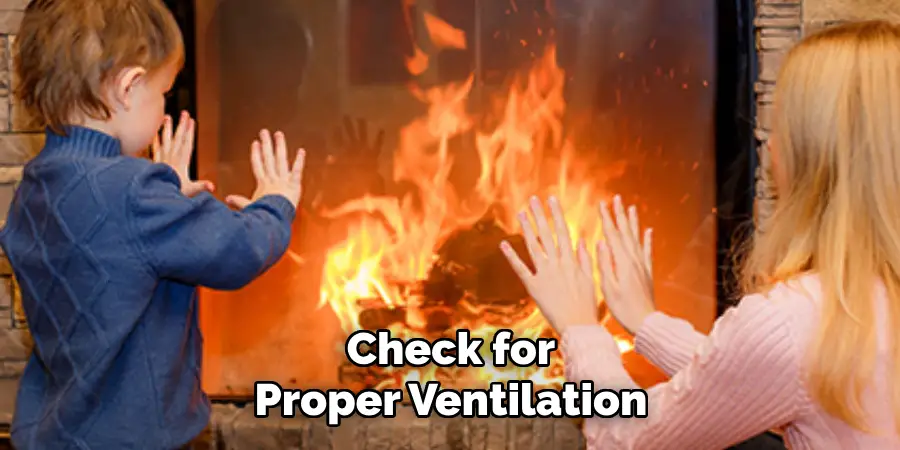
How to Move Fireplace Heat Around House: Use Ceiling Fans to Distribute Heat
1. Reverse the Ceiling Fan Direction
To effectively distribute the heat produced by your fireplace, it’s crucial to reverse the direction of your ceiling fan during the winter months. Set your ceiling fan to rotate clockwise; this adjustment helps push warm air that naturally rises back down into your living space.
Since warm air tends to gather near the ceiling, reversing the fan direction disperses this air downward, maintaining a consistent and comfortable temperature throughout the room. Ensuring the heat from your fireplace is effectively spread will lead to a cozier atmosphere and more efficient home heating.
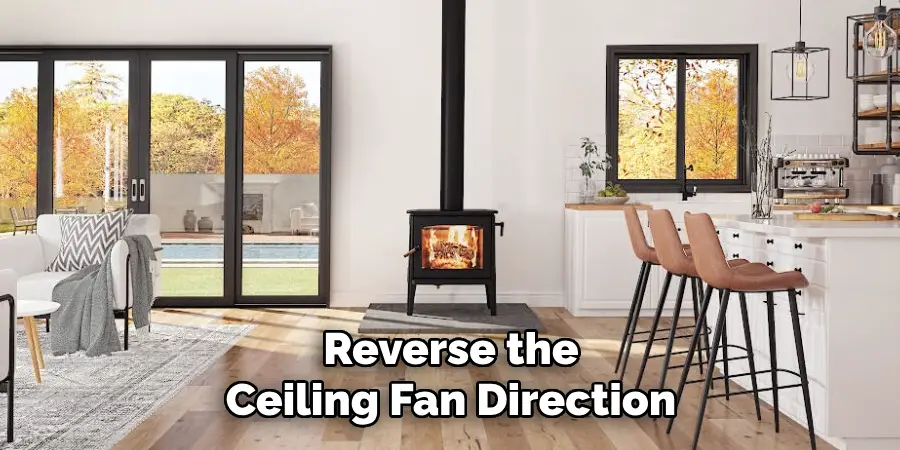
2. Install Ceiling Fans in Key Areas
Strategically installing ceiling fans in rooms adjacent to the fireplace enhances heat circulation. Placing fans in these connecting areas creates a pathway for warm air to travel, allowing it to reach more distant parts of the house. When choosing fan locations, consider hallways or transitional spaces that connect directly to the main fireplace room. These strategic placements will facilitate a more even distribution of warmth, ensuring that every part of your home benefits from the cozy heat of your fireplace.
3. Use Ceiling Fans on a Low Setting
Running your ceiling fans at a low speed is advisable to circulate warm air gently throughout the household without creating uncomfortable drafts. A slower fan speed ensures the heat spreads evenly, allowing for a gradual and effective mixing of warm and cooler air. This approach not only enhances comfort levels but also optimizes the distribution of heat produced by your fireplace, reducing the need for additional heating sources. Utilizing ceiling fans in this way can lead to a balanced and energy-efficient environment, maximizing the use of your fireplace as a primary heat provider.
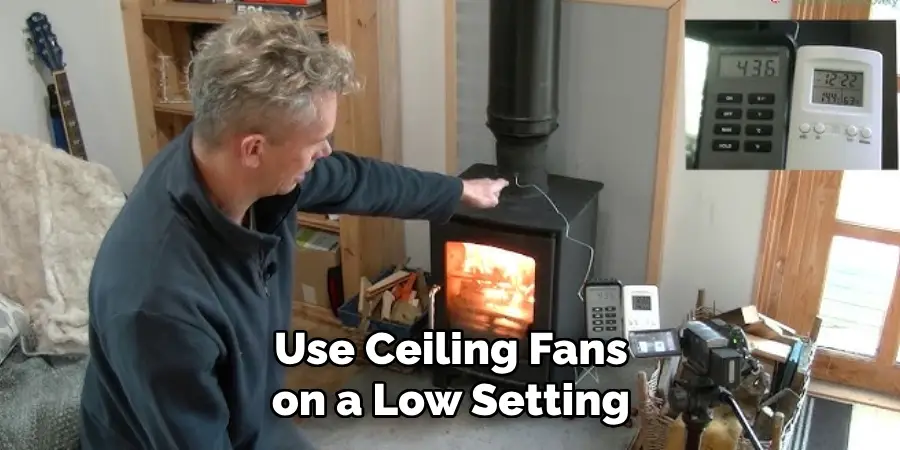
How to Move Fireplace Heat Around House: Use a Fireplace Blower or Fan
1. Install a Fireplace Blower
A fireplace blower is an efficient tool for enhancing the heat distribution from your fireplace. It operates by drawing in cold air from your room, heating it as it passes through the fireplace, and then pushing the warm air back into the living space. This mechanism ensures that the heat generated by the fire spreads more evenly across the room, maximizing your fireplace’s efficiency. To install a fireplace blower, follow these basic steps: first, ensure the power to your fireplace is turned off to avoid any electrical hazards.
Next, position the blower at the appropriate section within your fireplace, usually underneath or beside the firebox. Secure it with screws or attachments provided by the manufacturer. Make sure to connect the blower to the power source as per the instructions. Select a blower that complements your fireplace model and size for optimal results, enhancing its performance and heat distribution capability.
2. Use a Standalone Fan Near the Fireplace
For situations where installing a permanent blower is not feasible, using a standalone fan can be an effective alternative. Position a small electric fan on the floor near your fireplace to encourage the warm air to circulate more effectively. For best results, angle the fan slightly upward.
This positioning helps lift and disperse the warm air across the room, especially since warm air naturally rises. Ensuring the fan operates on a low to medium setting can help control the airflow, avoiding drafts while still maintaining a cozy atmosphere.
3. Position Fans in Doorways for Better Airflow
To extend the warmth from your fireplace into other parts of the home, consider using small fans in doorways. These fans, often referred to as doorway fans, are specially designed to draw warm air from one room and push it into adjacent rooms. Position these fans at various heights to optimize the airflow and ensure that warm air reaches all intended areas. Placing a fan higher up can help capture the rising warm air and direct it into spaces beyond the primary fireplace room. Experiment with different fan speeds and heights to achieve the best distribution of warmth throughout your home.
Utilize Your Home’s HVAC System
1. Use the HVAC Fan to Circulate Warm Air
One effective way to enhance heat distribution from your fireplace is by utilizing your home’s HVAC system fan. Setting the HVAC fan to the “On” position ensures continuous air circulation, even when the furnace isn’t actively heating. This method allows the warm air around your fireplace to move freely throughout the house, making the entire living space more consistently warm. By keeping air moving steadily, you can bridge the gap between rooms heated directly by the fireplace and those further away. This continuous circulation can prevent cold spots and ensure a seamless heat transition from one room to another, improving your home’s overall comfort level.
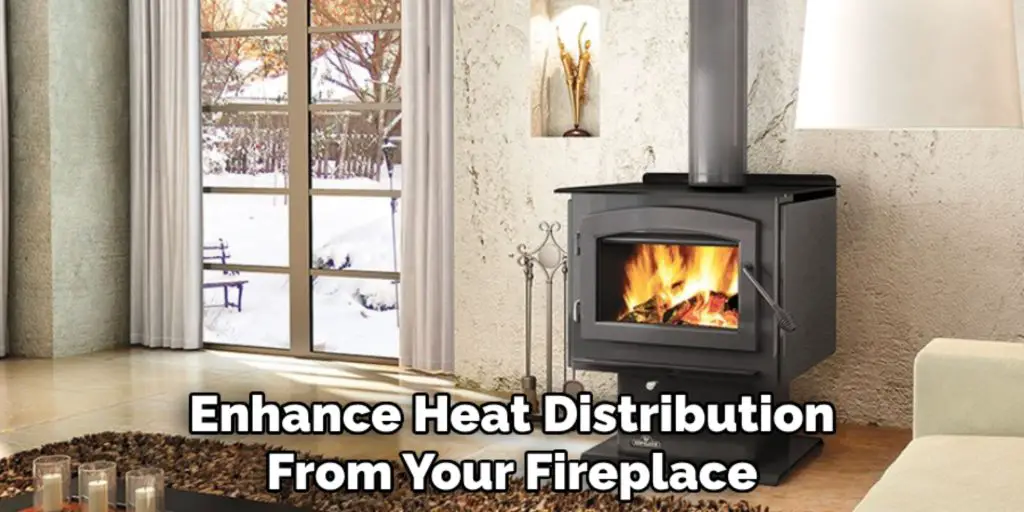
2. Open or Close Vents Strategically
Adjusting vents strategically can significantly boost the efficiency of your home’s heat distribution. Consider which vents to open or close to direct warm air from the fireplace room to cooler parts of the house. Opening vents in rooms farther from the fireplace while slightly closing vents near the fireplace can push the warm air into cooler areas. It may take some experimentation with vent settings to determine the most effective configuration for your home’s layout. By carefully managing the airflow through your vents, you can create a balanced temperature throughout the home, enhancing the comfort your fireplace provides.
3. Consider Adding a Return Vent Near the Fireplace
Adding a return vent near your fireplace could greatly improve the efficacy of your HVAC system in spreading warmth. A strategically placed return vent will draw in warm air from the fireplace room and redistribute it throughout the home via the HVAC system. This process can ensure that the heat generated by your fireplace reaches farther and extends beyond the immediate area. However, before installation, it’s advisable to consult a professional to assess your specific needs and determine if adding a return vent is feasible, given your home’s design. In addition to providing customized advice, a professional can ensure that any modifications adhere to safety standards and maximize the efficiency of your HVAC system.
Use Heat-Powered Fans for Wood-Burning Fireplaces
1. Place a Heat-Powered Fan on the Fireplace
Heat-powered fans are innovative devices designed to circulate air effectively without electricity. Utilizing the heat from a wood-burning fireplace, these fans power their blades through thermoelectric technology, whereby temperature differences generate electricity to spin the fan. To harness the maximum amount of heat, these fans should be placed directly on top of a wood-burning stove or near the fireplace opening. Positioning the fan correctly ensures that the warm air is distributed evenly throughout the room, enhancing the comfort and efficiency of your fireplace.
2. Choose the Right Size and Model
Selecting the appropriate heat-powered fan is crucial for effective heat distribution. Begin by assessing the airflow capacity necessary for your space, typically measured in cubic feet per minute (CFM). The CFM rating indicates how much air the fan can move, which should match the size of the area you wish to heat. Review fan specifications thoroughly to ensure the model you choose can circulate the air efficiently, considering the size of your fireplace and room. Matching your space’s correct fan size and model allows for optimal performance and comfort.
3. Maintain the Fan for Optimal Performance
Regular maintenance of your heat-powered fan is essential for its efficiency and longevity. Clean the fan periodically to remove dust and soot hindering its operation. Check for any wear or corrosion, especially on moving parts, and address any issues promptly. By ensuring your fan is in good working order, you maximize its ability to circulate heat from your fireplace. Routine care and maintenance extend the fan’s lifespan and maintain high performance, ensuring that your wood-burning fireplace continues to spread warmth effectively.
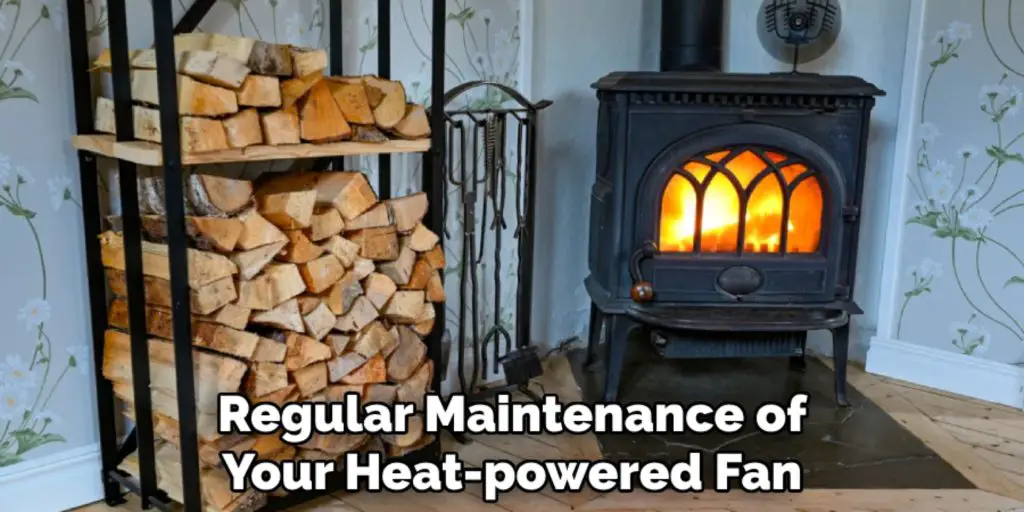
Insulate and Seal Your Home for Better Heat Retention
Proper insulation and sealing are crucial for maximizing your home’s heat retention during the colder months. Addressing areas where heat commonly escapes can significantly improve your home’s overall energy efficiency and keep rooms warmer and cozier.
1. Seal Gaps and Cracks Around Windows and Doors
Gaps and cracks around windows and doors are notorious for allowing heat to escape. To combat this, consider using weatherstripping, caulk, or foam sealant to close these openings effectively. Begin by thoroughly inspecting drafts, especially around window frames, door edges, and any visible gaps. Apply weatherstripping along movable joints like those on doors and window sashes. Use caulk or foam sealant for stationary joints and smaller cracks to provide a long-lasting barrier against heat loss. Identifying and sealing these areas promptly is one of the most straightforward ways to enhance your home’s warmth.
2. Use Heavy Curtains or Thermal Blinds
Installing heavy curtains or thermal blinds can be a simple yet effective strategy for retaining heat inside your home. These types of window coverings are designed to add an extra layer of insulation, keeping warm air from escaping through glass windows during winter. For optimal results, close the curtains or blinds during the night or when rooms are not in use, yet ensure they don’t obstruct heat sources like vents or radiators. During the day, consider opening them to let in natural sunlight, which can provide additional warmth. This balance ensures your home remains comfortably warm while efficiently conserving energy.
3. Improve Wall and Attic Insulation
Checking the insulation levels in your walls and attic prevents heat loss. Insufficient insulation can majorly affect high energy bills and an uncomfortable home environment. Inspect your attic and wall insulation, looking for any areas where it’s thin or missing entirely. If you’re unfamiliar with insulation standards, consulting a professional can provide invaluable assistance and guidance for potential upgrades. Upgrading your insulation can lead to substantial improvements in heating efficiency, making it an essential step if you notice persistent issues with heat retention in your home. Properly insulated walls and attic will create a more stable, warm environment during the chilly months.
Additional Tips for Maximizing Fireplace Efficiency
1. Use a Fireplace Insert
A fireplace insert can significantly enhance your fireplace’s heating efficiency by trapping and radiating more heat into your room. These inserts function as closed combustion systems, allowing for better heat retention than traditional open fireplaces. When choosing a suitable insert, consider the type of fireplace you have—whether it’s masonry or prefabricated. Ensuring that the insert fits correctly and matches your heating needs is also essential. Look for models with features such as a blower for improved heat circulation or catalytic technology for cleaner burns. Investing in a fitting fireplace insert converts your fireplace into a more effective home heating solution.

2. Close Off Unused Rooms
Closing off unused rooms helps focus the distribution of heat in the main living areas, maximizing the warmth from your fireplace. Start by shutting doors to any rooms not in use—like guest rooms or offices—and use draft stoppers at the base of these doors to prevent heat from escaping. Draft stoppers provide a simple yet effective barrier against drafts, keeping heated air within your living spaces. This straightforward method means your fireplace’s heat is concentrated where you need it most, improving overall energy efficiency.
3. Burn Seasoned Wood in a Wood Fireplace
For optimal heat output and efficiency, it’s crucial to burn seasoned wood in your wood fireplace. Seasoned wood has been dried for at least six months, reducing its moisture content to below 20%. This ensures that the wood burns hotter, produces less creosote, and is more efficient than green or freshly cut wood. When selecting wood, choose hardwoods like oak or maple, which burn longer and cleaner. Proper storage—away from moisture and in a well-ventilated area—can further ensure the wood remains seasoned. By using properly seasoned wood, you maintain a more efficient and safer wood-burning experience.
Conclusion
In conclusion, effectively distributing fireplace heat throughout your home is achievable by using a variety of methods such as ceiling fans, insulating and sealing your home, and leveraging your HVAC system. Understanding how to move fireplace heat around house means assessing which strategies best match your specific home layout, fireplace type, and heating needs. By combining different techniques, homeowners can maximize warmth and enhance energy efficiency. Experimenting with various approaches and adjusting accordingly will ensure your home remains cozy and well-heated, making the most of your fireplace during colder months.
About
Angela is the chief editor of Indoorense. She began her career as an interior designer before applying her strategic and creative passion to lifestyle and home.
She has close to 15 years of experience in creative writing and online content strategy for housekeeping and cleaning,home decorations as well as other efforts.
She loves her job and has the privilege of working with an extraordinary team. She lives with her husband, two sons, and daughter in Petersburg. When she’s not busy working she spent time with her family.

